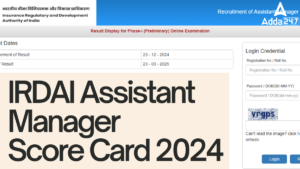Dear Readers,
So, in the previous articles, we read and discussed about
JAIIB/DB&F, exam pattern, Eligibility, Schedule, Registration fees and Syllabus
of Paper 1 in detail.
JAIIB/DB&F, exam pattern, Eligibility, Schedule, Registration fees and Syllabus
of Paper 1 in detail.
Now, in this article, we will be
discussing about the JAIIB/DB&F Subjects and Syllabus of PAPER 2 subject in details.
discussing about the JAIIB/DB&F Subjects and Syllabus of PAPER 2 subject in details.
SUBJECTS OF EXAMINATION:
(1) Principles & Practices of Banking, (Paper 1)
(2) Accounting & Finance for Bankers, (Paper 2)
(3) Legal & Regulatory Aspects of Banking (Paper 3)
PAPER 2 – ACCOUNTING & FINANCE FOR BANKERS
This Paper 2 Subject is divided into four Parts (A,B,C and D)
This Paper 2 Subject is divided into four Parts (A,B,C and D)
PART A – BUSINESS MATHEMATICS AND FINANCE
Calculation of Interest and
Annuities
Annuities
Calculation of Simple Interest
& Compound Interest; Calculation of Equated Monthly Instalments; Fixed and
Floating Interest Rates; Calculation of Annuities; Interest Calculation using
Products / Balances; Amortisation of a Debt; Sinking Funds
& Compound Interest; Calculation of Equated Monthly Instalments; Fixed and
Floating Interest Rates; Calculation of Annuities; Interest Calculation using
Products / Balances; Amortisation of a Debt; Sinking Funds
Calculation of YTM
Debt- Definition, Meaning &
Salient Features; Loans; Introduction to Bonds; Terms associated with Bonds;
Cost of Debt Capital; Bond value with semi-annual Interest; Current Yield on
Bond; Calculation of Yield-to- Maturity of Bond; Theorems for Bond Value;
Duration of Bond; Properties of Duration; Bond Price Volatility
Salient Features; Loans; Introduction to Bonds; Terms associated with Bonds;
Cost of Debt Capital; Bond value with semi-annual Interest; Current Yield on
Bond; Calculation of Yield-to- Maturity of Bond; Theorems for Bond Value;
Duration of Bond; Properties of Duration; Bond Price Volatility
Capital Budgeting
Present Value and Discounting;
Discounted Technique for Investment Appraisal; Internal Rate of Return (IRR);
Method of Investment Appraisal; NPV and IRR compared; Investment Opportunities
with Capital Rationing; Investment Decision making under condition of
uncertainty; Expected NPV Rule; Risk Adjusted Discount Rate Approach for NPV
Determination; Sensitivity Analysis for NPV Determination; Decision Tree
Analysis for NPV Estimation; Payback Methods; ARR.
Discounted Technique for Investment Appraisal; Internal Rate of Return (IRR);
Method of Investment Appraisal; NPV and IRR compared; Investment Opportunities
with Capital Rationing; Investment Decision making under condition of
uncertainty; Expected NPV Rule; Risk Adjusted Discount Rate Approach for NPV
Determination; Sensitivity Analysis for NPV Determination; Decision Tree
Analysis for NPV Estimation; Payback Methods; ARR.
Depreciation and its Accounting
Depreciation, its types and
methods; Comparing Depreciation Methods
methods; Comparing Depreciation Methods
Foreign Exchange Arithmetic
Fundamentals of Foreign Exchange;
Forex Markets; Direct and Indirect Quote; Some Basic Exchange Rate Arithmetic –
Cross Rate, Chain Rule, Value date, etc.; Forward Exchange Rates – Forward
Points; Arbitrage; Calculating Forward Points; Premium / discount; etc.
Forex Markets; Direct and Indirect Quote; Some Basic Exchange Rate Arithmetic –
Cross Rate, Chain Rule, Value date, etc.; Forward Exchange Rates – Forward
Points; Arbitrage; Calculating Forward Points; Premium / discount; etc.
PART B
– PRINCIPLES OF BOOKKEEPING & ACCOUNTANCY
– PRINCIPLES OF BOOKKEEPING & ACCOUNTANCY
Definition, Scope and Accounting
Standards
Standards
Nature and Purpose of Accounting;
Historical Perspectives; Origins of Accounting Principles; Accounting Standards
in India and its Definition and Scope; Generally Accepted Accounting Principles
of USA (US GAAP); Transfer Pricing; Overview of IFRS; Difference between GAAP
& IFRS.
Historical Perspectives; Origins of Accounting Principles; Accounting Standards
in India and its Definition and Scope; Generally Accepted Accounting Principles
of USA (US GAAP); Transfer Pricing; Overview of IFRS; Difference between GAAP
& IFRS.
Basic Accountancy Procedures
Concepts of Accountancy; Going
Concern Entity; Double Entry System; Principle of Conservatism; Revenue
Recognition and Realisation; Accrual and Cash Basis.
Concern Entity; Double Entry System; Principle of Conservatism; Revenue
Recognition and Realisation; Accrual and Cash Basis.
Maintenance of Cash / Subsidiary
Books and Ledger
Books and Ledger
Record Keeping Basics; Account
Categories; Debit and Credit Concepts; Accounting and Columnar Accounting
Mechanics; Journals; Ledgers; subsidiary books; etc.
Categories; Debit and Credit Concepts; Accounting and Columnar Accounting
Mechanics; Journals; Ledgers; subsidiary books; etc.
Bank Reconciliation Statement
Need for Bank Reconciliation;
Causes of Differences; Preparation of Bank Reconciliation Statement; How to prepare
a Bank Reconciliation Statement when Extracts of Cash Book and Pass Book are
given; Adjusting the Cash Book Balance; Advantages of Bank Reconciliation
Statement.
Causes of Differences; Preparation of Bank Reconciliation Statement; How to prepare
a Bank Reconciliation Statement when Extracts of Cash Book and Pass Book are
given; Adjusting the Cash Book Balance; Advantages of Bank Reconciliation
Statement.
Trial Balance, Rectification of
Errors and Adjusting & Closing Entries
Errors and Adjusting & Closing Entries
Meaning of a Trial Balance;
Features and Purpose of a Trial Balance; Types of Trial Balance and Preparation
of a Trial Balance; Disagreement of a Trial Balance; Classification of Errors;
Location of Errors; Rectification of Errors; Suspense Account and
Rectification; Rectification of Errors when Books are closed; Adjusting and
Closing Entries.
Features and Purpose of a Trial Balance; Types of Trial Balance and Preparation
of a Trial Balance; Disagreement of a Trial Balance; Classification of Errors;
Location of Errors; Rectification of Errors; Suspense Account and
Rectification; Rectification of Errors when Books are closed; Adjusting and
Closing Entries.
Capital and Revenue Expenditure
Expenditure; Distinction between
Capital and Revenue Expenditure; Deferred Revenue Expenditure; Receipts;
General Illustrations.
Capital and Revenue Expenditure; Deferred Revenue Expenditure; Receipts;
General Illustrations.
Bills of Exchange
Types of Instruments of Credit;
Term and Due Date of a Bill; Certain Important Terms; Accounting Entries to be
Passed; Accommodation Bill etc.
Term and Due Date of a Bill; Certain Important Terms; Accounting Entries to be
Passed; Accommodation Bill etc.
PART C–
FINAL ACCOUNTS
FINAL ACCOUNTS
Balance Sheet Equation
Balance Sheet Equation;
Computation of Balance Sheet Equation.
Computation of Balance Sheet Equation.
Preparation of Final Accounts
Preparation of Trading A/C; Profit
and Loss A/C; Profit & Loss Appropriation Account; Balance Sheets
and Loss A/C; Profit & Loss Appropriation Account; Balance Sheets
Ratio Analysis
Meaning of Accounting Ratios;
Classification of Ratios; Uses of Accounting Ratios; Limitations of Accounting
Ratios; Calculation and interpretation of various Ratios; Different Users and
their Use of Ratios.
Classification of Ratios; Uses of Accounting Ratios; Limitations of Accounting
Ratios; Calculation and interpretation of various Ratios; Different Users and
their Use of Ratios.
Final Accounts of Banking
Companies
Companies
Definition and Functions of a
Bank; Requirements of Banking Companies as to Accounts and Audit; Significant
Features of Accounting Systems of Banks; Principal Books of Accounts;
Preparation and Presentation of Financial Statements of Banks; CMA Format;
Accounting Treatment of Specific Items; Preparation of Profit and Loss Account;
Comments on Profit and Loss Account; Important Items of Balance Sheet;
Disclosure Requirements of Banks; Additional Disclosures prescribed by RBI;
Disclosures required under BASEL norms.
Bank; Requirements of Banking Companies as to Accounts and Audit; Significant
Features of Accounting Systems of Banks; Principal Books of Accounts;
Preparation and Presentation of Financial Statements of Banks; CMA Format;
Accounting Treatment of Specific Items; Preparation of Profit and Loss Account;
Comments on Profit and Loss Account; Important Items of Balance Sheet;
Disclosure Requirements of Banks; Additional Disclosures prescribed by RBI;
Disclosures required under BASEL norms.
Company Accounts I & II
Definition and Types of Companies;
Distinction between Partnership and Limited Liability Company; Classes of Share
Capital; Issue of Shares; General Illustrations Non-voting Shares; Form of Balance
Sheet; Legal Requirements for Assets; Legal Requirements for Liabilities; Legal
Requirements for Profit & Loss A/c; Preparation of Final Accounts
Distinction between Partnership and Limited Liability Company; Classes of Share
Capital; Issue of Shares; General Illustrations Non-voting Shares; Form of Balance
Sheet; Legal Requirements for Assets; Legal Requirements for Liabilities; Legal
Requirements for Profit & Loss A/c; Preparation of Final Accounts
Accounting in a Computerized
Environment
Environment
Meaning, Features of and Terms
used in Computerized Accounting; Difference between Computerized and Manual
Accounting; Advantages and Disadvantages of Computerized Accounting; Functions
performed by Computerized Accounting Softwares available in the Market;
Computerization – Scope and Experiences in Banking; The Core Banking
Components; Information Security; Internet and World Wide Web – Influences on
Banking
used in Computerized Accounting; Difference between Computerized and Manual
Accounting; Advantages and Disadvantages of Computerized Accounting; Functions
performed by Computerized Accounting Softwares available in the Market;
Computerization – Scope and Experiences in Banking; The Core Banking
Components; Information Security; Internet and World Wide Web – Influences on
Banking
PART D
– BANKING OPERATIONS
– BANKING OPERATIONS
Banking Operations &
Accounting Functions
Accounting Functions
Preparation of Vouchers, cash
receipt and payment entries, clearing inward and outward entries, transfer
debit and credit entries, what is KYC and what are the different documents to
satisfy KYC, verify KYC and authenticity of documents, operational aspects in
regard to opening of all types of accounts, scrutiny of loan applications /
documents, allowing drawals and accounting entries involved at various stages,
operational aspects of CBS environment etc., Back office operations in banks,
handling of unreconciled entries in banks.
receipt and payment entries, clearing inward and outward entries, transfer
debit and credit entries, what is KYC and what are the different documents to
satisfy KYC, verify KYC and authenticity of documents, operational aspects in
regard to opening of all types of accounts, scrutiny of loan applications /
documents, allowing drawals and accounting entries involved at various stages,
operational aspects of CBS environment etc., Back office operations in banks,
handling of unreconciled entries in banks.
This Paper 2 will be little bit logical and tough
as compared to other two papers Paper 1 and Paper 3. So for this we will be
practicing more and will go through the notes properly, have to attend the
Quizzes.
as compared to other two papers Paper 1 and Paper 3. So for this we will be
practicing more and will go through the notes properly, have to attend the
Quizzes.
On the very next upcoming Articles, we will
be discussing about the Syllabus of Paper 3 Legal & Regulatory Aspects of Banking in detail, about the
subjects and how to plan for it, study for it, and finally we together will
start the preparation for these.
be discussing about the Syllabus of Paper 3 Legal & Regulatory Aspects of Banking in detail, about the
subjects and how to plan for it, study for it, and finally we together will
start the preparation for these.
We want our readers to be on the top of every profession specially
our Banking aspirants and bankers who think that there is no way to stop where
you are and there is never a stop to your growth. And believe us You can’t miss
these courses. It is not mandatory but yes it is very very important for your
knowledge and growth in any banking or financial institution.
our Banking aspirants and bankers who think that there is no way to stop where
you are and there is never a stop to your growth. And believe us You can’t miss
these courses. It is not mandatory but yes it is very very important for your
knowledge and growth in any banking or financial institution.
For any query/issue/support/guidance related to IIBF, JAIIB or DB&F, you can contact us through: http://support.adda247.com
You may also like to read:
- All About DB&F: Diploma in Banking and Finance
- All About JAIIB: Exam Pattern, Eligibility and Schedule
- Diploma in Banking & Finance: Exam Pattern, Eligibility and Schedule
- Introducing JAIIB: A Start-Up Course for Every Banker or Banking Aspirant to Bank Upon
- JAIIB AND DB&F Paper 1 Syllabus: Principles & Practices of Banking





 The Hindu Review October 2022: Download ...
The Hindu Review October 2022: Download ...
 IRDAI Assistant Manager Score Card 2024 ...
IRDAI Assistant Manager Score Card 2024 ...
 IRDAI Assistant Manager Prelims Cut Off ...
IRDAI Assistant Manager Prelims Cut Off ...




